Joma Sison on the 1871 Paris Commune
On the occasion of the 1871 Paris Commune, Jose Maria Sison, chairman emeritus of the International League of Peoples’ Struggle, delivered this address to an ILPS-hosted webinar on 20 March 2021. The reactors to the seminar are Azra Sayeed of the International Women’s Alliance and the Roots of Equity organization (Pakistan), and Frank Chapman of the National Alliance against Racist and Political Repression (USA).
SIGNIFICANCE OF THE PARIS COMMUNE OF 1871 AND ITS RELEVANCE TO THE WORLD PROLETARIAN REVOLUTION
Address to the International League of Peoples’ Struggle
By Jose Maria Sison, ILPS Chairperson Emeritus
March 18, 2021
Dear Comrades and Friends.
I thank the International League of Peoples’ Struggle for inviting me to give the keynote speech in this webinar for the purpose of celebrating the Paris Commune of 1871 on the occasion of its 150th anniversary.
I am honored and delighted to discuss the significance of this great and glorious revolutionary event and its relevance to the world proletarian revolution up to the ongoing anti-imperialist and democratic struggles of the proletariat and the entire people of the world. I am proud that since its founding in 2001 the ILPS has been inspired by the Paris Commune and has contributed greatly to the worldwide anti-imperialist and democratic mass movement.
Again in the revolutionary spirit of the Paris Commune of 1871, I daresay that these current mass struggles are in transition to the great resurgence of the world proletarian revolution from the major setbacks caused by revisionist betrayal of the socialist cause. The proletariat and people can never accept the escalation of their exploitation and oppression.
Imperialism has inflicted neoliberalism, state terrorism, wars of aggression, the threat of nuclear annihilation, global warming and pandemics on the proletariat and the people of the world and has incited them to fight back and advance the revolutionary cause of national liberation, democracy and socialism.
I. Significance of the Paris Commune of 1871
As Chairman of the Central Committee of the Communist Party of the Philippines, I discussed the significance of the Paris Commune of 1871 on the occasion of its 100th anniversary in 1971. I relied on the best possible summing up and analysis of the great event, The Civil War in France by Karl Marx who monitored the event through various public sources of information and best of all through members of the International Workingmen’s Association (the First International) who were in the Central Committee leading the Paris Commune.
The Paris Commune proved for the first time in the history of mankind that the working class was capable of destroying the bourgeois state machinery as well as replacing it with the state of the working class, a dictatorship over the exploiting classes and a democracy for the erstwhile exploited classes. From March 18 to May 28, 1871, the workers of Paris (who numbered in the hundreds of thousands and who constituted the National Guards) rebelled, dismantled the reactionary army and demonstrated that they could seize political power and govern a new society.
They resisted the attempts of the French bourgeois reactionaries headed by Thiers to disarm them in compliance with the terms of surrender to the Prussians led by Bismarck who won in the Franco-Prussian War. Upholding the dictatorship of the proletariat, the communards issued as their first decree the suppression of the standing army of the bourgeoisie and its replacement by the armed people.
The Paris Commune was eventually defeated because it failed to launch promptly an offensive against the reactionary bourgeois government put up by Thiers in Versailles at a time that its army was still weak and disorganized and the Prussians had not yet released the many French army men that they had held as prisoners of war to favor the French bourgeois government.
To gain time on the Communards and make a deal with Bismarck, Thiers dispatched armed detachments against Paris and at the same time pretended to sue for peace negotiations upon the failure of every armed expedition. Thus, Thiers and Bismarck were eventually able to launch attacks that overpowered the Paris Commune and resulted in the mass murder of 20,000 to 30,000 worker-martyrs.
Marx honored the Paris Commune in the following terms: “Workingmen’s Paris with its Commune will be forever celebrated as the glorious harbinger of a new society. Its exterminators’ history has been already nailed to that eternal pillory from which all the prayers of their priests will not avail to redeem them.” The Paris Commune raised to a new and higher level the glorious struggle of the working class that burst all out all over Europe in 1848.
Consequent to the Paris Commune, Marx and Engels inscribed in the 1872 preface to the Communist Manifesto the following fundamental lesson of decisive importance: “One thing especially proved by the Commune, viz., that ‘the working class cannot simply lay hold of the ready-made state machinery and wield it for its own purposes’…” They saw fit to restate the words that are in single quotation marks from The Civil War in France.
To lead the October Revolution of 1917 to victory, Lenin learned well from the Paris Commune and repudiated the bourgeois parliamentarists, social chauvinists and social pacifists of the Second International. In his State and Revolution, he was emphatic on the lesson from the Paris Commune that the proletariat must smash the bureaucratic-military machinery of the bourgeoisie. Thus, the October Revolution of the Bolsheviks was essentially the destruction of the bourgeois state machine, establishment of the proletarian dictatorship and eventually its consolidation under Stalin.
In consonance with the Paris Commune, Chairman Mao taught us, “Political power grows out of the barrel of a gun.” This is the essence not only of the people’s democratic revolution under the leadership of the proletariat in China but also of all revolutionary struggles waged by the proletariat in the 150 years after the Paris Commune. It is impossible for the proletariat to seize political power without following and realizing the principle of armed revolution.
One more fundamental lesson that the Paris Commune has taught us is that the proletariat must have its revolutionary party to lead the revolution and overthrow the bourgeoisie and for such party to build its strength ideologically, politically and organizationally for the purpose. The revolutionary practice of the Paris Commune showed the need for a central body of leadership to guide the vigorous movement of the revolutionary masses.
The National Guards, the body of armed workers that seized power in Paris from the bourgeoisie looked up to a Central Committee for leadership. On March 26, the Paris Commune was elected by the workers as a representative body to lead them. Though the International Workingmen’s Association was denounced by the bourgeoisie as responsible for leading the revolt of the workers, it did not carry the preponderant influence among the workers.
Despite the fact that Marx was the leading organizer and spirit of the First International, Marxism had not yet been grasped by the majority of the workers. Blanquism and Proudhonism were acknowledged by the leaders of the Paris Commune as their guide. In practice, however, the Paris Commune debunked the Blanquist school of anarchy and the Proudhonist school of petty-bourgeois socialism and proved the correctness of Marxism.
Contrary to the anarchist tenets of Blanqui, the workers of Paris did not only destroy the bourgeois state machine but established the dictatorship of the proletariat and it was not a mere bunch of intellectuals that made revolutionary triumph possible but the great mass of workers in the course of class struggle. The economic decrees of the Paris Commune found no use for Proudhon’s economic teachings about small cooperatives and had to deal with the facts of large-scale industry.
Learning from the experience of the Paris Commune, Lenin wrote What Is To Be Done? in answer to the need for building the revolutionary party of the proletariat. Tirelessly he built the Bolshevik Party as the advanced detachment of the working class, with Marxism as the guide to action. This party served as the political leader and general staff of the proletariat in the revolution for establishing the dictatorship of the proletariat and building socialism.
In the Chinese revolution, Comrade Mao Zedong built a well-disciplined party armed with the theory of Marxism-Leninism, using the method of criticism and self-criticism and closely linked with the broad masses of the people. This was the core of leadership of the entire Chinese proletariat and the people. It was the leader of the people’s army and of the united front of all revolutionary classes and organizations.
Still one more fundamental lesson that can be learned from the Paris Commune is that the creators of history are the masses. Leaders can sum up and analyze experience and can formulate new tasks only on the basis of the revolutionary mass movement. Genuine leadership can arise, make decisions and act correctly only by relying on the masses and learning from them. “From the masses to the masses” is the correct line that must be followed by the revolutionary party of the proletariat and by its cadres.
At first, Marx warned the Paris workers that any attempt to overthrow the government would be the folly of despair. But when in March 1871, the revolutionary workers of Paris revolted against the bourgeoisie and created the Commune, Marx set the example of a true revolutionary thinker and leader by welcoming the Paris Commune and considering himself a participant. He paid tribute to the revolutionary enthusiasm and initiative of the workers and closely studied their movement for its great worth.
The Paris Commune showed the boundless capacity of the revolutionary masses for creating new things after destroying the bourgeois state machine with their own armed power. They created a new government based on a truly democratic exercise of universal suffrage among the workers. They put up a leadership from their own ranks, working conscientiously and receiving pay equal to that of the worker, with no representation allowances and discretionary funds.
Such a leadership shunned the separation of executive and legislative functions. It was the complete opposite of the parliament, a talking shop of the bourgeoisie and the landlord class and a complete obstacle to social revolution. Any leader was subject to recall by the people. The Paris Commune had the attributes of a true democracy for the proletariat and the people while being at the same time a class dictatorship over the exploiting classes.
The workers of Paris were capable of achieving so much despite the hardship and difficulties of political and economic life in a country defeated in war and in a city besieged not only by the ruffians of Thiers but also by the troops of Bismarck. How much more would the workers have accomplished had they had their own class-conscious party thoroughly instructed on Marxism!
How much more would they have been capable of had they not been prevented from a revolutionary coordination with the workers in other cities and with the peasant masses in the provinces of France. The Paris Commune envisioned a nationwide system of people’s communes with a national delegation seated in Paris.
II. Relevance to the World Proletarian Revolution
Subsequent to the defeat of the Paris Commune of 1871, especially because of the mass murders inflicted on the workers during the bloody week of March 21 to 28, the international bourgeoisie and its articulators prognosticated that the working class would not dare to rebel again against the bourgeois state. But the heroism and martyrdom of the workers of Paris inspired the workers of so many countries to build socialist and labor parties and movements. The Internationale became their common anthem.
In its better years within the period from 1898 to 1916, the Second International contributed to the building of Marxist parties of workers and making Marxism the main trend in the working class movement in Europe in the last decade of the 19th century despite the revisionism of Bernstein and then Kautsky. In the meantime, as a consequence of repeated crises of overproduction and the relentless accumulation and concentration of private capital, several capitalist countries became monopoly capitalist and ushered in the world era of modern imperialism and the world proletarian revolution towards the end of the 19th century.
In this new era, the world capitalist system became more afflicted by the contradiction between the the social character of the forces of production (the proletariat and the means of modern industry) and the private mode of appropriation by the capitalist class and became even more prone to the crisis of overproduction, intensified class struggle and inter-imperialist wars, such as those of World War I and World II in the first half of the 20th century.
World War I provided the conditions for the working class to seize political power in Russia and build Soviet socialism in one-sixth of the earth where Tsarism once reigned. World War II provided the conditions for communist parties to defeat the forces of fascism and take power and build socialism in China and other countries as well as to lead the national liberation movements in Asia, Africa and Latin America.
By the early 1950s one-third of humankind was governed by communist and workers’ parties. But the US emerged as the strongest imperialist power also as a result of World War II. It launched the Cold War since 1947 and unleashed propaganda campaigns of anticommunism, touting “free enterprise” as the guarantee to democracy. It violently opposed the people’s movements for national liberation, democracy and socialism. It waged wars of aggression in Korea from 1950 to 1953 and in Vietnam and the rest of Indochina from 1955 onward.
The Korean people and the Democratic People’s Republic of Korea (DPRK) fought and stalemated US imperialism. And the Vietnamese and the rest of the Indochinese people inflicted on the US its first categorical defeat in 1975. All the while, China was engaged in socialist revolution and construction and stood as a bulwark against US imperialism. From its relative peak of economic and military strength from 1945 to 1975, the US started its strategic decline due to stagflation, military overspending and the economic recovery of capitalist countries devastated during World War II.
But in the Soviet Union, where Stalin had directed the postwar reconstruction of the socialist economy and had broken the nuclear monopoly of the US, modern revisionism had risen to power and totally negated Stalin in 1956 in order to overthrow the state of the working class and allow the bourgeoisie and the factors of capitalism to grow within socialist society. It pushed bourgeois reformism and pacifism under Khrushchov and then social-imperialism under Brezhnev.
The Communist Party of China (CPC) opposed the modern revisionist line of the Communist Party of the Soviet Union (CPSU) in the international communist and workers’ movement. It also opposed within China the blatant Rightists as well as the home-grown and Soviet-influenced revisionists. It prevailed over a number of anti-socialist elements before, during and after the Great Leap Forward but some persisted in power.
Recognizing the crucial importance of upholding Marxist-Leninist theory and practice, Mao carried out the socialist education movement from 1962 to 1966 to cleanse the Party and the socialist state of Rightism and revisionism ideologically, politically, economically and organizationally. But this did not suffice. And thus the Great Proletarian Cultural Revolution (GPCR) was carried out from 1966 to 1976 on the theory and practice of continuing revolution under proletarian dictatorship through cultural revolution in order to combat revisionism, prevent capitalist restoration and consolidate socialism.
At the 100th anniversary of the Paris Commune on 1971, the GPCR shone brilliantly as the peak of the world proletarian revolution. But it would go through twists and turns and ups and down. The Rightists or revisionists increasingly succeeded to combine with the Centrists against the Left behind the apparent victory of the GPCR while Mao was alive. But soon after his death in 1976, the capitalist roaders led by Deng Xiaoping successfully carried out a counterrevolutionary coup against the proletarian revolutionaries and the socialist state of the working class.
The Dengist counterrevolution declared the GPCR as a complete catastrophe and carried out the restoration of capitalism in China through capitalist reforms and opening up to the US and world capitalist system. After suppressing the mass movements against inflation and corruption at Tien An Men in Beijing and in scores of other cities in China in 1989, Deng and his political stooges pleaded for more economic concessions from the the US and became even more determined to strengthen capitalism in China as an integral part of the world capitalist system.
By 1991 the Soviet Union collapsed and its satellite revisionist-ruled states in Eastern Europe disintegrated. The bourgeoisie took full control of all the countries in the Soviet bloc. The communist parties influenced by Soviet modern revisionism all disintegrated. So did those communist parties which became confused by the anti-GPCR position of the Chinese party and state. US imperialism emerged as winner of the Cold War and became the sole superpower. And its ideologues and publicists proclaimed the death of socialism and the end of history with the supposed permanence of capitalism and liberal democracy.
US imperialism gloated over the full restoration of capitalism in China, Russia and the entire former Soviet bloc. It was unmindful of the fact that China and Russia were two large capitalist countries that could exacerbate inter-imperialist contradictions and worsen the crisis of the world capitalist system. It became preoccupied with the objective of subordinating China to US economic expansion under the neoliberal policy of imperialist globalization and subjecting Russia to the neoconservative policy of using the full spectrum of US power to expand NATO and undo the vestiges of Soviet power and influence in Eastern Europe, Central Asia and the Middle East.
Thus, the US itself aggravated the conditions for accelerating its own strategic decline through its economic, trade and technological concessions that enabled China to grow economically and militarily and undermine US economic hegemony and through the “endless wars” to counter Russia that cost USD 6 trillion in so short a period of time. The US has conspicuously lost its sole superpower status since the financial meltdown of 2008 and the ceaseless worsening of the economic and political crisis of the world capitalist system until now.
US imperialism adopted neoliberalism to overcome the problem of stagflation. But it never solved the crisis of overproduction which had been the root cause of stagflation. The increased production by the military-industrial complex was profitable within the US economy and from sales of war materiel to the oil-producing countries. But it was counterproductive and unprofitable as the US wars of aggression failed to expand a stable economic territory for US imperialism abroad.
We see today the growing turbulence in the world capitalist system. All major contradictions in the world capitalist system are intensifying, such as those between labor and capital; those between the imperialist powers and the oppressed peoples and nations; those between the imperialist powers and states that assert national independence and the socialist cause; and those among the imperialist powers themselves.
The intensification of contradictions between labor and capital within the traditional and relatively new imperialist countries is due to the worsening crisis of overproduction relative to the drastically reduced income of the working people in the entire world capitalist system. The workers have become restless and rebellious due to unemployment, low income, rising prices of basic commodities, austerity measures, the curtailment of their democratic rights and the rise of chauvinism, racism and fascism.
Among the imperialist powers, the US and China have emerged as the two main contenders in the struggle for a redivision of the world. Each tries to have its own alliance with other imperialist powers. The traditional alliance of the US, Europe and Japan is still operative in such multilateral agencies as the IMF, World Bank and WTO and in NATO and other military alliances. Ranged against the traditional imperialist powers are China and Russia which have broadened their alliance in BRICS, Shanghai Cooperation Organization (SCO), BRICS Development Bank, the Belt and Road Initiative and the Asian Infrastructure Investment Fund.
The imperialist powers engage in a struggle for a redivision of the world but so far they have not directly warred on each other to acquire or expand their sources of cheap labor and raw materials, markets, fields of investment and spheres of influence. They have developed the neocolonial ways and means of shifting the burden of crisis to the underdeveloped countries. They are afraid of any direct war between imperialist powers because they are afraid of mutual destruction with their own nuclear weapons of mass destruction. They give vent to their aggressiveness by waging wars against underdeveloped countries in Asia, Africa and Latin America.
They make the oppressed peoples and nations of the underdeveloped countries the main source of superprofits through a higher rate of exploitation. They make them suffer the main brunt of the recurrent and worsening economic and financial crisis of the world capitalist system. Even as they are now increasingly protectionist, they continue the policy of neoliberal globalization at the expense of others. To suppress the people’s resistance to oppression and exploitation, they provide their client-states with the means of state terrorism and fascist rule by the bureaucratic comprador bourgeoisie. They also use their respective client-states for proxy wars and counterrevolutionary wars for maintaining their economic territory or for redividing the world.
Despite their attempts to shift the burden of crisis to the oppressed peoples and nations, the imperialist powers are driven to extract higher profits from their own working class under the neoliberal policy regime. To suppress the resistance of the proletariat and people to oppression and exploitation in both the developed and underdeveloped countries, they have enacted so-called anti-terrorist laws and are increasingly prone to the use of state terrorism and to sponsor fascist organizations and movements for countering the growing revolutionary movement of the proletariat.
There are anti-imperialist governments like the Democratic People’s Republic of Korea, Cuba, Vietnam, Venezuela and Syria that effectively assert national independence and the socialist cause. They enjoy the support of the people, stand up against US imperialism and take advantage of the contradictions among the imperialist powers in order to counter sanctions, military blockade and aggression. The people and revolutionary forces led by the proletariat can strengthen themselves in the course of their just struggles.
III. Transition to the Resurgence of World Proletarian Revolution
Since 2019, we have seen the unprecedented rise and spread of gigantic anti-imperialist and democratic mass protests, joined by millions of people and occurring in all the six continents and in both the developed and underdeveloped countries. These are the resistance of the broad masses of the people to the extreme exploitativeness and bankruptcy of the neoliberal policy of imperialist globalization and to the escalation of state terrorism and wars of aggression.
I am deeply gratified that the International League of Peoples’ Struggle has contributed greatly to the development of the anti-imperialist and democratic mass movement since 2001. The mass protests of 2019 flowed from earlier ones as a result of the persistent stagnation and depression of the world capitalist economy and outrageous failure of the leaders and experts of the imperialist powers and the taskmasters of the client states to solve the economic crisis and avert political crisis.
The Covid-19 pandemic and the lockdowns and other efforts of the authorities to discourage the mass protests failed to diminish and dampen these in 2020. Instead the pandemic has served to expose the extreme anti-social character and consequences of neoliberalism and rouse the broad masses of the people to rise up against their loss of jobs and incomes, deprivation of social services, the bailouts and stimulus packages for the big bourgeoisie, the escalation of repressive measures and the promotion of fascism in the name of anti-terrorism. It is expected that the mass protests will intensify and spread further in 2021 and thereafter.
Clearly, the world capitalist system and the domestic ruling systems are in a grave and deepgoing crisis. The imperialist powers and their puppet states fail more than ever in the old way. The worldwide anti-imperialist and democratic mass struggles signify the transition to the resurgence of the world proletarian revolution. The revolutionary spirit of the Paris Commune of 1871 is once more calling for the further rise of the oppressed and exploited masses and the revolutionary parties of the proletariat against imperialism and all reactionary classes
The massive and sustained mass protests in various countries of Europe, North America, Oceania, Latin America, Asia and Africa bring to the surface the deep-seated detestation of the people for the extreme oppression and exploitation that they are suffering. The proletariat and people of the world are fighting back.
The starting points or inciting moments for the mass protests have been concrete issues of wide variability but they always rise up to the level of condemning imperialism and all reaction and demanding revolutionary change of system. The upsurge of anti-imperialist and democratic mass struggles shows that we are definitely in transition to the resurgence of the world proletarian revolution.
The broad masses of the people are rising up against the worst forms of imperialist oppression and exploitation, such as neoliberalism, austerity measures, gender discrimination, racism, oppression of indigenous peoples, fascism, wars of aggression and environmental destruction. The wanton plunder of the natural resources by monopoly capitalism threatens the very life of humankind with global warming and pandemics even as the danger of nuclear annihilation persists, especially because the imperialist powers are whipping up fascism.
In the last 50 years, we have seen how imperialism, neocolonialism, modern revisionism, neoliberalism, fascism and neoconservatism attack and put down the proletariat and people of the world. Now, the people are resisting as never before and generating new revolutionary forces, including parties of the proletariat and mass organizations that are guided by Marxism-Leninism-Maoism. These will ultimately result in the spread of armed revolutionary movements and the rise of socialist states and people’s democracies with a socialist perspective.
While the imperialist powers and their reactionary stooges all over the world are using all kinds of counterrevolutionary violence to suppress the mass protests, there are the reformists and opportunists who claim that these are leaderless and spontaneous and would soon subside upon the peaceful democratization of the rotten ruling systems of the exploiting classes. But already there are Marxist-Leninist-Maoist parties and groups striving to develop themselves as revolutionary parties of the proletariat and to build the armed revolutionary organization for seizing political power under the inspiration of the Paris Commune of 1871 and succeeding armed revolutions.
The Filipino people and their revolutionary forces have persevered in the new democratic revolution through protracted people’s war and with a socialist perspective in the last more than 50 years. Thus, they are now in the front line of the ongoing anti-imperialist and democratic mass struggles and they are making major contributions in the transition to the resurgence of the world proletarian revolution.
Ever loyal to the just revolutionary cause of the proletariat and people, they have waged revolutionary struggle resolutely and militantly and have fought fiercely against the counterrevolutionary campaigns of suppression by the enemy. They have been inspired by the revolutionary spirit of the Paris Commune of 1871 and by all succeeding struggles for national liberation and socialism in the world and are more than ever determined to contribute to the resurgence of the world proletarian revolution.
They take pride in being referred to as one of the torch bearers of the anti-imperialist struggles of the peoples of the world and the world proletarian revolution. Their revolutionary will and fighting spirit are more than ever higher as their revolutionary struggles are now in concert with the resurgent mass struggles of the proletariat and people on a global scale. We foresee that in the next fifty years the crisis-stricken world capitalist system will continue to break down and give way to the rise of anti-imperialist, democratic and socialist states and societies.###
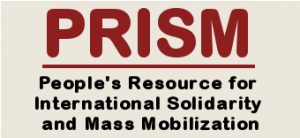
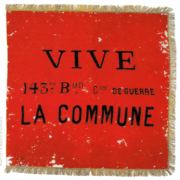
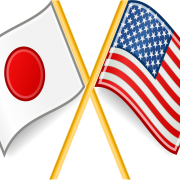
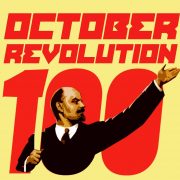
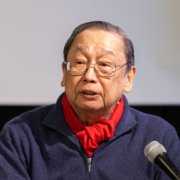
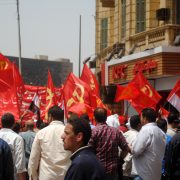



Leave a Reply
Want to join the discussion?Feel free to contribute!